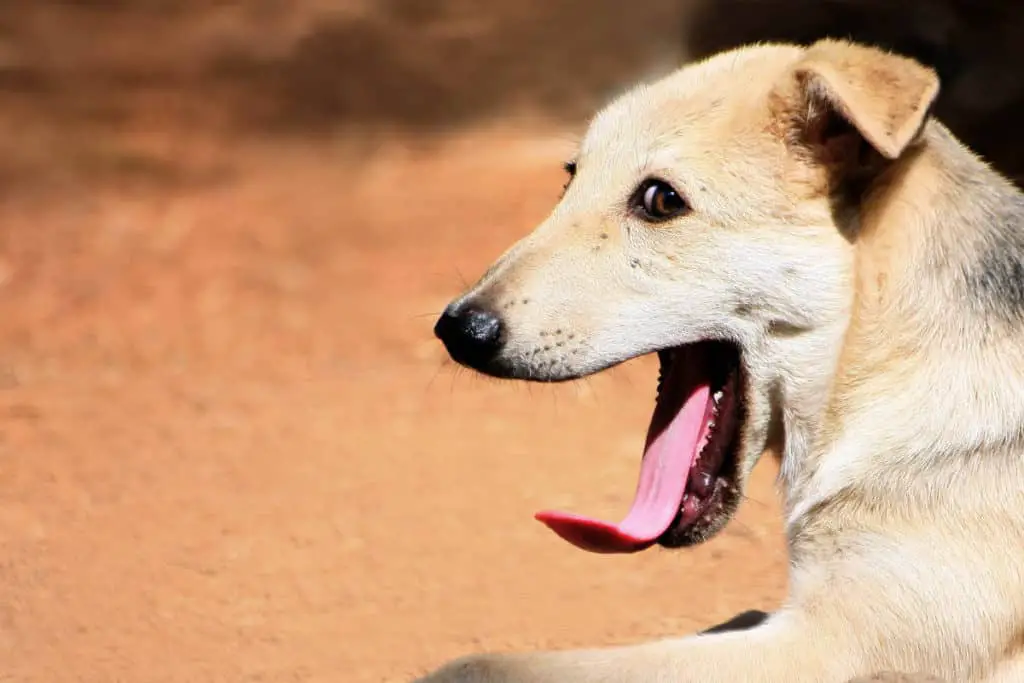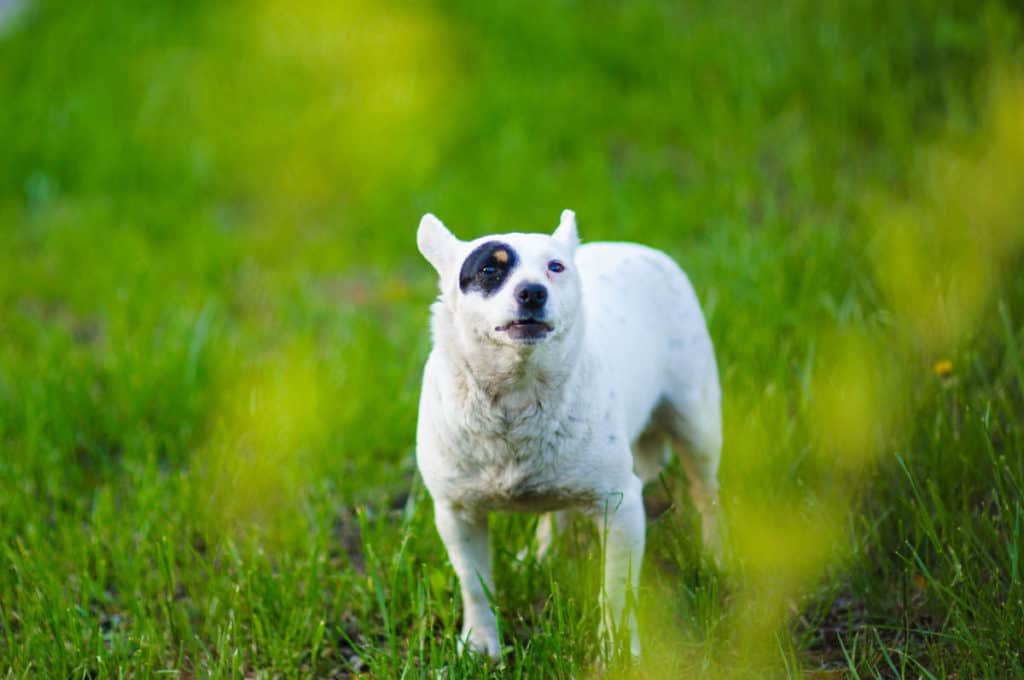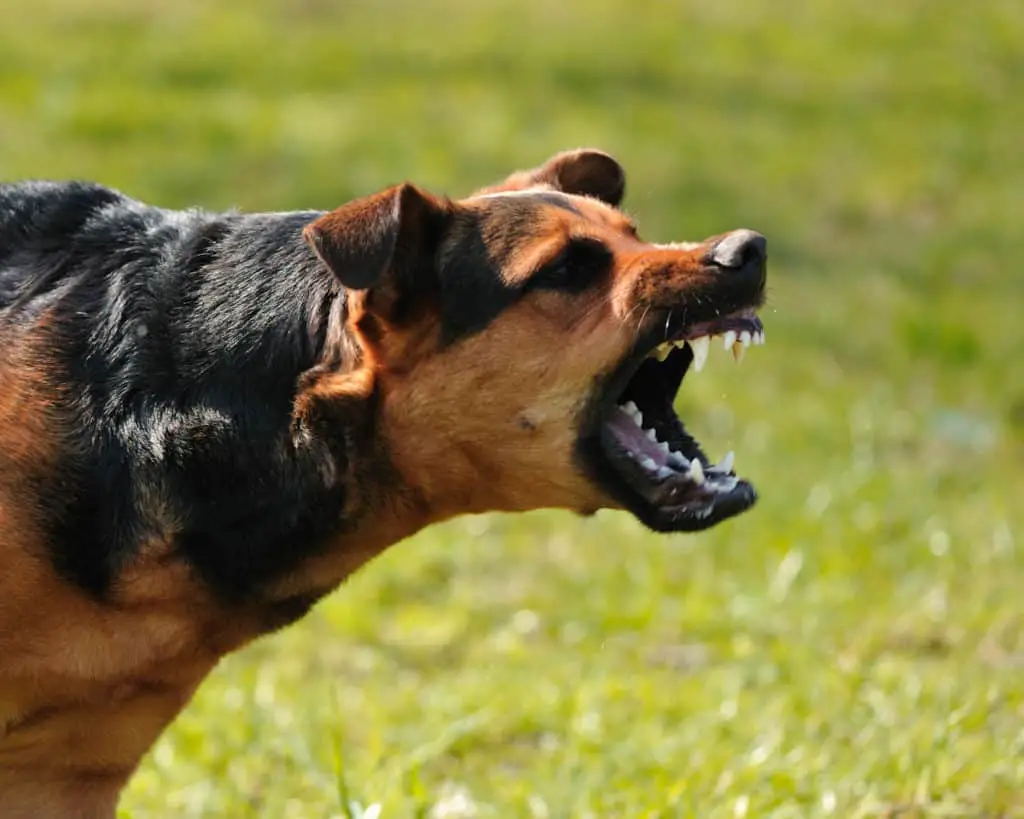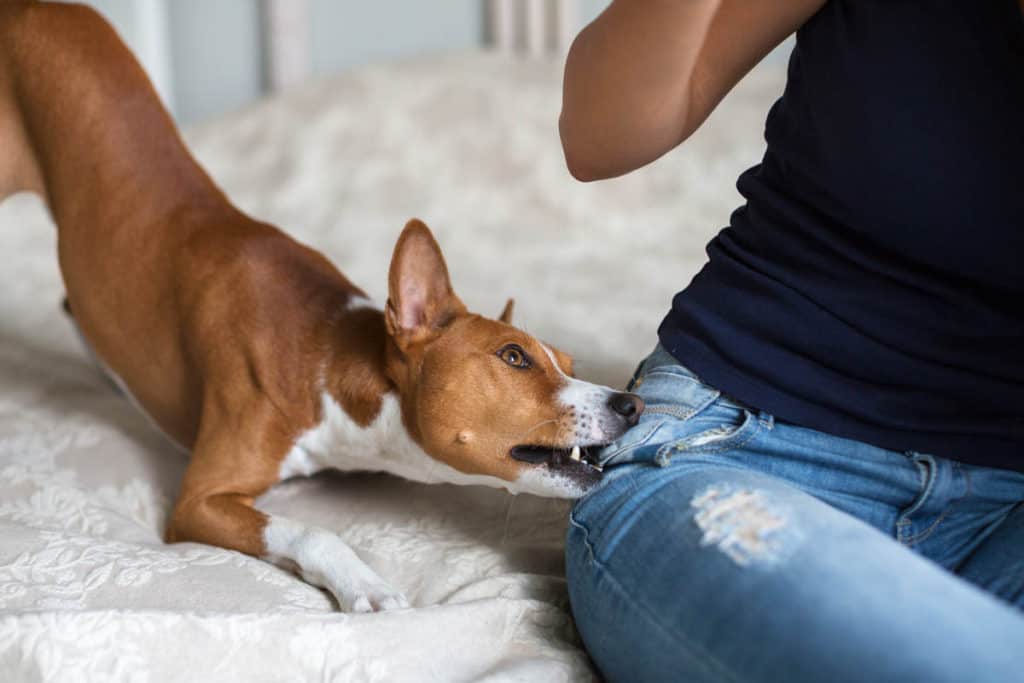No-one likes the thought of a dog biting them or a child, but it does happen. Most dog bites are done by a dog that is known to the person, like the family pet. The most common people to receive a dog bite are children and older people. Even the most placid docile dog can bite under the right circumstances.
Is there a way to prevent dog bites? The answer is yes, by following some simple rules you can reduce the risk of a dog biting you or your child.
In the US almost five million people are bitten by dogs every year. Although the bites are recorded by severity and breed, it is not often stated why the dog bite happened.
A common phrase you will hear when a beloved family dog bites someone is ‘it was out of the blue’. However, it is rare for a dog to bite someone unprovoked.
Dogs give many warnings before they resort to biting, and often these warnings are ignored or not noticed which is when ‘out of the blue’ bites happen. Knowing what to look for in your dog or any dog’s body language is key to preventing dog bites from happening.
Dogs body language
Dogs don’t speak our language and so can’t verbally tell us when they feel ill, uncomfortable, anxious, or threatened. They use body language to communicate with each other and us, so knowing some basic dog body language will let you know how your dog is feeling in any given situation.
It takes a keen eye to spot the subtle body language signs of dogs, which could explain why the majority of bites happen to children and older people. But knowing what you are looking for will certainly help keep yourself and your children safer around dogs.
Some common signals that a dog isn’t happy about a person or situation are:
Turning their head and/or body away from a person
The dog is letting you know that it doesn’t feel comfortable with you or someone who is trying to interact with it. When you see the dog do this then allow the dog to move away from whatever it isn’t happy with. If you have your dog on-lead and it does this then move your dog away from whatever is making it uncomfortable.

Yawning
If you see the dog yawning, that’s a signal that it isn’t comfortable with the situation and you should allow the dog to move away, or if you have the dog on-lead then move away from the person or situation.
Lip Licking
Excessive lip licking is a sign of stress or fear. If you see a dog excessively licking its lips then it is a good time to leave it alone. This usually means that the earlier body signals have been ignored.
Ears back and wide eyes
Being able to see the whites of the dog’s eyes is a clear sign of fear. If its ears are back flat against its head too then it is very fearful. You should move away from the dog, or move the dog away from the situation.

Body stiffening
If you see the dog’s body stiffening then it is going on high alert, it’s getting ready to run away or defend itself. Turn away from the dog, let it know that you are not a threat, or block the situation and start moving the dog away from it.
Teeth baring and tense face
When a dog bares its teeth and its face is tense, it’s showing you that it is not happy and it will defend itself. It is most definitely time to move away or remove the dog from the situation.

Growling
A dog will growl if its body language signals have been ignored. It wants you or the perceived threat to stay away, it’s had enough. Never ignore a growl, this is the final warning before a bite.
Why do dogs bite?
The majority of dogs will only bite as a last resort to make a threatening situation go away. They usually give many body language signals then vocalize by growling and teeth-baring before they bite.
The exception to this would be a sick dog. Or a dog who has learned that their body language is always ignored so will go straight to teeth-baring and growling then bite. In some cases, straight to the bite. This is why it is very important to know what your dog is trying to tell you by learning some of their body language.
There are some key situations where a dog is more likely to bite:
- A dog who is protecting its human or its territory.
- Nursing mother dog – she will be very protective of her pups.
- A frightened dog.
- Sleeping dog.
- A dog who is eating.
- Sick or ill dog.
- A dog guarding its food, water, or toys.
- Chained-up dog – 25% of fatal dog attacks were done by dogs who were chained up, according to the CDC report on dog bites.
- Un-neutered or un-spayed dogs.
Dog safe rules to prevent dog bites
There are some simple rules to remember to keep yourself and your children safe around dogs. All dogs, no matter their breed or age, have the capacity to bite, but the majority of dogs give lots of warnings beforehand. Even so, if you follow these simple rules, it can help prevent bites.
- Do not approach a strange dog without asking permission of its human first.
- Walking straight-on at a dog is ‘rude’ in dog language and can be seen as threatening. Turn your body at an angle when approaching.
- Allow the dog to see you and sniff you before you pet it.
- If the dog looks away from you or moves away from you, do not follow, allow it to move away.
- If the dog yawns or licks its lips, leave it alone, it doesn’t feel comfortable.
- You should never approach a growling dog.
- Pet the dog on the shoulder, chest, or back, not every dog likes the top of their head to be petted.
- Do not put your face into the dog’s face, this is challenging threatening behavior in dog and human language.
- Never allow children to grab, pull, prod, or climb on top of a dog. A dog is not a toy but a living creature. Allowing a child to climb on a dog can hurt the dog and put the child in danger.
- Wrapping your arms around a dog’s neck is threatening to a dog. You should not allow children to do this to any dog, ever. Teach them that when a dog leans on you that is their version of a hug.
- Never interrupt a dog when it’s eating. Dogs can be protective of their food.
- You should not interrupt a nursing mother dog, they are especially protective when they have young pups to look after.
- Young children or unfamiliar children should never be left alone unsupervised with dogs.
- A dog needs to have a quiet area where it knows that it is safe, you should not interrupt its downtime or if it is in its safe area then leave it alone.
- Do not tease or allow children to tease dogs! The American Animal Hospital Association says that a top reason for dog bites is teasing, with the child starting it!
- If an unfamiliar dog comes towards you, do not scream and run. Dogs love to chase, and screaming can increase their level of excitement. Stay calm, pull your arms in and raise your hands towards your throat tucking your fingers into a fist shape and turn yourself away from the dog.

If your dog growls at someone who approaches it, don’t tell your dog off. After all, it’s doing you a favor, it’s vocalizing its discomfort and giving a warning. I would much rather hurt someone’s feelings and tell them that my dog doesn’t want them to approach than punish the growl and allow the dog to bite next time without warning. The last thing you want is for your dog to not give that final warning.
Better safe than sorry to prevent dog bites!
No-one wants a dog bite, even the dog doesn’t want to bite, that’s why it gives so many signals and warnings before it finally does. It’s up to us to recognize the warning signs and help prevent bites.
To be safe around dogs we need to learn to speak a little bit of dog. Dogs have learned some of our languages so it’s only courteous and sensible for us to learn to speak a little of theirs.
Having a dog in the family is really rewarding, and children benefit from growing up around pets. It’s up to us to teach our children how to safely interact with dogs.
We need to be the voice of our dogs, to keep them safe and reduce the need for them to get to the warning level of growling and biting.
Being mindful of their body language is a sure way to help reduce the number of dog bites.
I hope this article was helpful.
Before you go, you may find these articles interesting:
How To Stop A Husky Pup Biting – suitable for all breeds of pups

Leave a Reply